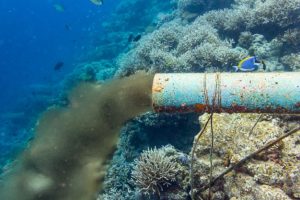The EPA on September 16 rescinded its guidance document entitled “Applying the Supreme Court’s County of Maui v. Hawaii Wildlife Fund Decision in the Clean Water Act Section 402 National Pollutant Discharge Elimination System Permit Program.” This guidance document was issued on January 14, 2021, by the Trump administration.
“Using the tools provided by the [CWA], EPA is committed to ensuring that all communities across America have clean and safe water,” said EPA Assistant Administrator for Water Radhika Fox in an EPA press release.
The U.S. Supreme Court (SCOTUS) reached its decision in the Maui case on April 23, 2020, and based its decision on the fact that the “[CWA] forbids ‘any addition’ of any pollutant from ‘any point source’ to ‘navigable waters’ without an appropriate permit from the [EPA].” In its decision to determine whether a National Pollutant Discharge Elimination System (NPDES) permit is required for pollutant releases through groundwater to jurisdictional waters, the Court held that an NPDES permit is required “if the addition of the pollutants through groundwater is the functional equivalent of a direct discharge from the point source into navigable waters.”
The Court included a list of seven noninclusive factors to examine in determining whether indirect discharges constitute the “functional equivalent” of a direct discharge:
- Transit time,
- Distance traveled,
- The nature of the material through which the pollutant travels,
- The extent to which the pollutant is diluted or chemically changed as it travels,
- The amount of pollutant entering the navigable waters relative to the amount of the pollutant that leaves the point source,
- The manner by or area in which the pollutant enters the navigable waters, and
- The degree to which the pollution (at that point) has maintained its specific identity.
When it issued the guidance document, the Trump administration’s “Maui guidance reduced clean water protections by creating a new factor for determining if a discharge of pollution from a point source through groundwater that reaches a water of the United States is the ‘functional equivalent’ of a direct discharge to such water,” states the EPA press release. “The addition of that factor skewed the ‘functional equivalent’ analysis in a way that could reduce the number of discharges requiring [an NPDES] permit.”
The review of the previous administration’s guidance was undertaken under President Joseph Biden’s Executive Order (EO) 13990, which directed federal agencies to “review all regulations and policies undertaken by the previous administration and rescind or revise any that do not protect public health and the environment.”
In light of the revocation of the previous administration’s guidance, the EPA announced it will utilize CWA regulations and a “straightforward application” of the SCOTUS Maui decision.
“The Office of Water is evaluating appropriate next steps,” the press release says. “In the interim, consistent with past practice and informed by the factors specified by the Supreme Court, EPA will continue to apply site-specific, science-based evaluations to determine whether a discharge from a point source through groundwater that reaches jurisdictional surface water requires a permit under the Clean Water Act.”

